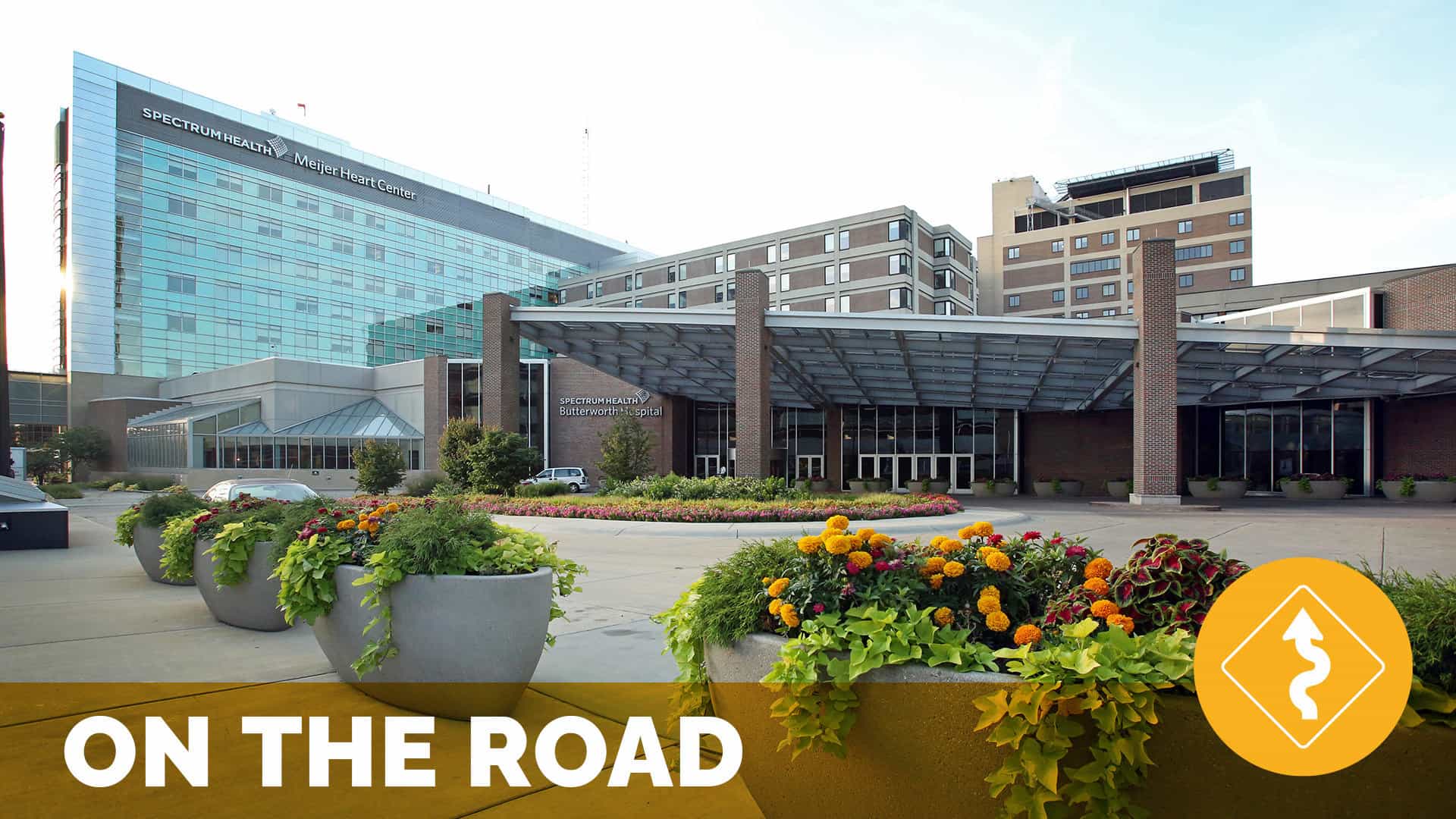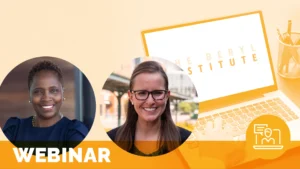The Power of Collaboration in Patient Experience Improvement

On the Road with Value Health Partners – August 2014
by Jason A. Wolf, Ph.D.
My August On the Road provides a new perspective and a variation from our typical story of a single site visit. More so, it reinforces a critical point we have worked to support and encourage through our work at The Beryl Institute – that collaboration in driving patient experience outcomes serves all involved in this effort. This is not just collaboration among individuals in the same organization, but as we see at the macro level in the Institute community, it is collaboration between organizations, even those who are deemed competitors, that has the greatest potential for positive impact.
I continue to believe there are no fundamental secrets in the art of patient experience action, but rather the distinctions between organizations come in how and with what intention they execute on ideas. The distinctions I have found in those that outperform others are more often about a commitment to action than a broad differentiation in tactics applied. This was supported in my latest visit with the seven hospitals engaging in the Value Health Partners collaborative effort to impact the patient experience of care. These organizations include: Allegiance Health, Bronson Healthcare Group, Covenant Healthcare, Lakeland Healthcare, Munson Healthcare, Oakwood Healthcare and Spectrum Health.
My visit exposed me to the work of five of those organizations and some specific examples of practice they are putting in place to impact experience outcomes. I was also inspired to see that these organizations, who could be holding their cards close as regional competitors, not only openly shared ideas, documents and models, they engaged in a combined scorecard to track their individual and collective improvement on key experience metrics, including HCAHPs. They exemplified the power of shared thinking, shared ideas and the mutual support and encouragement central to the best in experience improvement efforts.
In this On the Road, I will share a background on this effort, some of the practice highlights from each of the organizations and a deeper dive into the work of our host organization, Spectrum Health in Grand Rapids, MI. While I will share brief bites of all the work taking place, each of these organizations have impressive stories to share on each of their own organizational efforts. Consider this On the Road a collaborative buffet of ideas to perk interest and I encourage you to reach out for further information from those that inspire you. One thing I hope you take away is the unwavering generosity of spirit this group exemplified for this work.
Background on the Partnership
The partnership gathering I attended was hosted by Spectrum Health in Grand Rapids, MI and supported by Value Health Partners (VHP). The Value Health Partners members alternate hosting the in-person collaborative meetings quarterly. VHP is a partnership of seven high-performing health systems in Michigan. The goal of VHP is to learn from the best and leapfrog practices to the highest level possible. The team at VHP identifies their members as both teachers and students, sharing proven practice and learning from one another openly. In the last five years of collaborative efforts on a number of fronts, VHP members have saved over $7 million collectively through clinical process improvements.
The team at VHP is focused on improving community health value through best performance, measurement and representation. And while focused on a number of critical healthcare issues, including stroke awareness, and creating high reliability organizations with a focus on reducing hospital-acquired conditions and medical error, they have also expanded their efforts in the patient and family experience of care, creating a shared dashboard for tracking and understanding the impact of improvement efforts on this front. It was the discussion of just some highlights of these efforts I was privileged to join and learn from during my visit.
While I will not expand on every effort, I do want to provide a few headlines from those present for the clear intention and measured impact these organizations were working to achieve. The interest in the efforts – based both on effective practices and outcomes achieved – was evident in the room, where in each case shared there was a desire expressed by those in attendance to learn more. I believe you will have the same reaction.
Key Ideas Shared
As I listened to the members of the collaborative share their practices, it again reinforced what incredible efforts are taking place in healthcare today to positively impact the experiences of patients and families. It also highlighted the purposeful intention that organizations are working together for improvement as well. The ideas shared represented thoughtful and active efforts to ensure better outcomes for all engaged in the experience process. As I share nuggets from each of the participants, I hope it will reinforce work you have in process or inspire new thinking for what you might consider. By sharing these thoughts, you too become an expanded part of this collaborative effort.
Allegiance Health – Providing Information that Matters
The Allegiance team shared a story of their journey in less than a year to establish and implement not just a patient experience team, but core practices focused on improvement. Innovative ideas included:
“We Care” Teams. These are teams that engaged two medical assistants to round on all new admissions to a unit to welcome them, answer questions, review care plans and work to reduce anxiety in starting the care experience.
Med Side Effects Flash Cards. These simple, visually appealing and informative cards were available for all the most common medications and describe the medication, why typically used, potential side effects and warning signs to watch for.
Sleep Menu. These checklists provided a tool for engaging in dialogue around sleep needs and requirements for patients. The idea is that by addressing expectations up front, you create the best in healing environments, come to mutually agreed upon processes for the care experience and tackle typically elusive issues such as noise at night.
Bronson Healthcare – A Focus on Engaging Physicians
The Bronson team shared the story of their effort to engage physicians. They presented the work of their Physician Leadership Academy, held over a “typical” school year of about 8-9 months, with two evening classes a month. The curriculum was extensive in topics from teamwork to resiliency and focused on ultimately how to engage physicians as owners of outcomes. Part of the work of this effort is to have teams of physicians work through and present on a specific problem. The example shared, in how to bring HCAHPS alive for physicians, resulted in a video series designed to reinforce the best way in which to communicate with patients and families when entering a patient room. This insightful idea put physicians in the position to encourage and educate their peers and is leading to great outcomes for the Bronson team.
Lakeland HealthCare – Transparency for Improvement
The Lakeland team presented a powerful case for transparency in patient input by showcasing an extensive process for the review and tracking of patient comments. The effort, which started with inpatient survey comments, now extends to both the outpatient and home care spaces as well. The underlying premise is that comments are now available to all and presented as “gem and nuggets”, as gifts of information to act on in making rapid improvements. Through an extensive categorization process, the comments can also be linked to specific activities and also aligned to clear needs for action or improvement. As the members in the organization get more comfortable with sharing both positive and constructive comments, the organization has been able to focus improvement efforts and see a rise in scores.
To support this transparency, a recognition system around a program called “Touching Hearts” was implemented to identify those recognized directly in patient comments. Each time an individual is mentioned in a positive comment, they receive a heart sticker for their badge. When 4 hearts are achieved, a giant heart replaces the 4 instances. This has become a source of pride, recognition and even a little competition in moving their experience efforts forward.
Oakwood Healthcare – A Framework for Effective Communication
The Oakwood team shared a central effort on patient and family centered communication. In fact, the program named with the acronym IDEAL was part of a recent virtual conference from The Beryl Institute and a full presentation replay is available on this practice. The IDEAL communication effort set a new standard for expectations in communication and provided an enhancement to Oakwood’s behavioral standards. IDEAL, an acronym for action, represents five elements central to effective communication efforts. They include: Introduce, Define, Explain, Ask, and Listen. Listening is a key differentiator in this process as it reinforces the importance of the patient and family voice and their roles as partners in the healthcare dialogue.
Implementation of the IDEAL model has been tracked via rounding surveys, gathering both implementation and frequency of efforts as well as comments related to each element of the process. The application of the model has been showing positive signs, both in its acceptance and use and the resulting outcomes, specifically having an impact on the HCAHPS nursing dimension, especially with the critical influence of communication in those questions. This case exemplifies the power of focused execution over the need for complex models in driving significant outcomes.
Spectrum Health – Tackling the Issue of Call Light Response
As host, the Spectrum Health team presented the last case, which was followed by a facility tour and a broader overview of their experience efforts. The specific effort shared by the Spectrum team, framed by the Director of Patient Experience and various experience consultants, exemplified the importance of all voices committed to this work. The lead in sharing the case, Linda Schaltz, is manger of a unit that piloted the organization’s call light initiative. It was understood that as in most efforts to reduce call lights, you are focusing on not just responsiveness, but at its core quality, safety and service outcomes. This is the essence of patient experience itself.
The call light effort was significant in that it included a broad set of voices in redesigning a call light response process based on current practices of nurse “ownership” for a select set of patients and encompassing 30 documented steps. The objective of the effort was to reduce response time by not just acknowledging a call light, which in original state was a response from the nurses direct phone line via intercom, to a personal touch of having a “face in the room”.
The redesign process followed process improvement methodology and through this effort was able to streamline the call light process from 30 steps to just three steps. It also shifted the nursing teams perspective from one of “my” patient to “our” patients as now everyone had accountability to respond. Like other improvement efforts at Spectrum, this too not only included those doing the work, but also those impacted by the work. Dale Reinke, chair of one of the organization’s Patient and Family Advisory Councils (PFACs), shared his experience in contributing to this improvement process. Perhaps the most telling statement of the importance of the work was when Dale shared quite passionately, “Other than family, this is the best thing I have ever done.”
That captured the powerful nature of the work the Spectrum team shared. Not only have the results been significant, with achievements at or above target for all central objectives, but the significant reduction in response time has also seen a reduction in safety issues in the pilot unit. In fact, one patient dubbed the response time on the pilot unit “freaky fast” in their survey comments.
Of interest as well is that while there was initial resistance to this change, in giving up the phone, the clinical team found they have more time to engage with their patients, meet their needs and address concerns in the moment without rushing to the next call. The scores across the board are reflecting this new level of engagement.
In addition, as one presenter shared, it has become one of the quietest units in the facility. The process diminished the chaos of running to respond, and as many of the nurses involved indicated reduced stress, created ease in the process and allowed people to more effectively do their job, including taking lunch breaks and knowing all patients were well looked after. There is much more information to be shared behind this story, the processes used, people engaged and incredible outcomes achieved, but to acknowledge there are efforts that can simply, but profoundly impact the patient experience may be no better exemplified than in this case. To note as well, I do hope we will see this as a webinar via the Institute in the near future.
A Visit to Spectrum
The generosity of sharing among participants was continued in the openness and pride with which the Spectrum Health team showcased their facility and experience efforts on the tour that followed. While no short tour can cover all the efforts an organization is tackling, they can reinforce the feeling a place has in its intention to drive a positive experience for patients and families. On our tour we were introduced to the incredible efforts in new and nationally recognized facilities, such as the Helen DeVos Children’s Hospital, and associated clinics and also saw the inner workings of some of the core hospital units. Through the tour, we saw the power of a consistent focus on one experience, something very similar to the integrated efforts I shared in my most recent On the Road about Carolinas HealthCare.
From a consistent application of communication methods, such as whiteboards, to the improvement processes shared, such as the call light effort, the team at Spectrum exemplified their commitment to experience in every interaction on our quick and full visit. What stood out in our tour were not just the ideas shared, but the pride of the people we met about their shared commitment to patients and families.
While not shared extensively here, Spectrum Health has a powerful framework for engaging patient and families as partners in all they do. This commitment (outlined in this impressive overview of their Patient and Family Advisory Council program) is one I have found at the foundation of all the organizations I have encountered not only committed to doing good work, but that are also driving positive outcomes overall.
We ended our tour and our day together in Spectrum’s Transformation Control Center. The room was ringed in various projects focused on ensuring positive and significant improvements to ensure the best in outcomes, processes and efficiencies for the organization. Driven by Kurt Knoth, VP, Performance Improvement, and supported by members of the Spectrum community from executive champions, to engaged associates, to actively involved patient and family members, these efforts were committed to ultimately provide the best in experience for all who encountered the system.
The ability to look into the inner workings of this framework for excellence reinforced the very reason this group of collaborative partners convenes. In learning from one another and in constantly working on the improvements that will impact quality, safety, service in the care environment, this group can truly rise the tide and lift all boats.
Reinforcing a Call for Collaboration
I continue to raise the call for collaboration as we work to ensure the best in healthcare experience. The work of The Beryl Institute itself as a global community of practices is grounded on this very idea. With that, it was enlivening and inspiring to see true collaboration in action. This isn’t a feel good story about organizations just getting along; this experience exemplified how we can share real tangible practices, tools and resources, challenge one another to achieve great things and collectively continue to improve the patient experience for all we serve. This visit inspired me to suggest we too in the broader Institute community should continue to challenge each other. Perhaps we should start collaborative efforts to move the bar beyond just the sharing of information to the development of shared outcomes and measurable improvement? I invite and encourage your ideas on how we can move forward and how you might want to contribute to this effort. What we saw in this band of committed individuals in Michigan can and should serve as a catalyst for much, much more. I look forward to your thoughts.
My deepest appreciation to Barb Mulder for the invitation to join the experience collaborative for a taste of this great work. I too am grateful for the generosity of each of the organizations sharing their ideas and efforts. It was heartening to see so many Institute members coming together in this group as well. Also special thanks to the Spectrum Health team for their role as gracious host for this day. I believe they, like all their collaborators, have much more yet to share.
Related content
-
 Culture & Leadership | Patient Family & Community Engagement
Culture & Leadership | Patient Family & Community EngagementSurvivor Support Programs Strengthen Patient Experience
In this webinar, participants will gain in-depth knowledge of how providing survivor support programs can enhance the human experience of health care. Survivor support programs are the ideal mechanism to facilitate compassionate connected care between patients, families, and members of the care team. Learning Objectives – Recognize the role survivor support programs have on patient
Learn more -
 Culture & Leadership | Innovation & Technology | Staff & Provider Engagement
Culture & Leadership | Innovation & Technology | Staff & Provider EngagementHuman-Centered Leader Rounding: Using Generational Insights and Personalization
Explore how healthcare leaders can design and adapt their rounding processes to cater to different patient and employee generations, combining generational data with a personalized approach that is specific to the individual. The discussion will focus on personalized care, communication preferences, and bridging generational gaps in expectations through a human-centric approach that prioritizes empathy and
Learn more -
 Culture & Leadership | Staff & Provider Engagement
Culture & Leadership | Staff & Provider EngagementNonviolent Communication to Improve the Human Experience
2pm ET / 1pm CT / 12pm MT / 11am PT – Discover the transformative power of Nonviolent Communication (NVC) in this engaging webinar. Grounded in emotional intelligence, NVC equips healthcare professionals with tools to resolve disputes and prevent conflict escalation through clear, compassionate communication. Participants will explore NVC’s four-step framework, which focuses on identifying
Learn more
